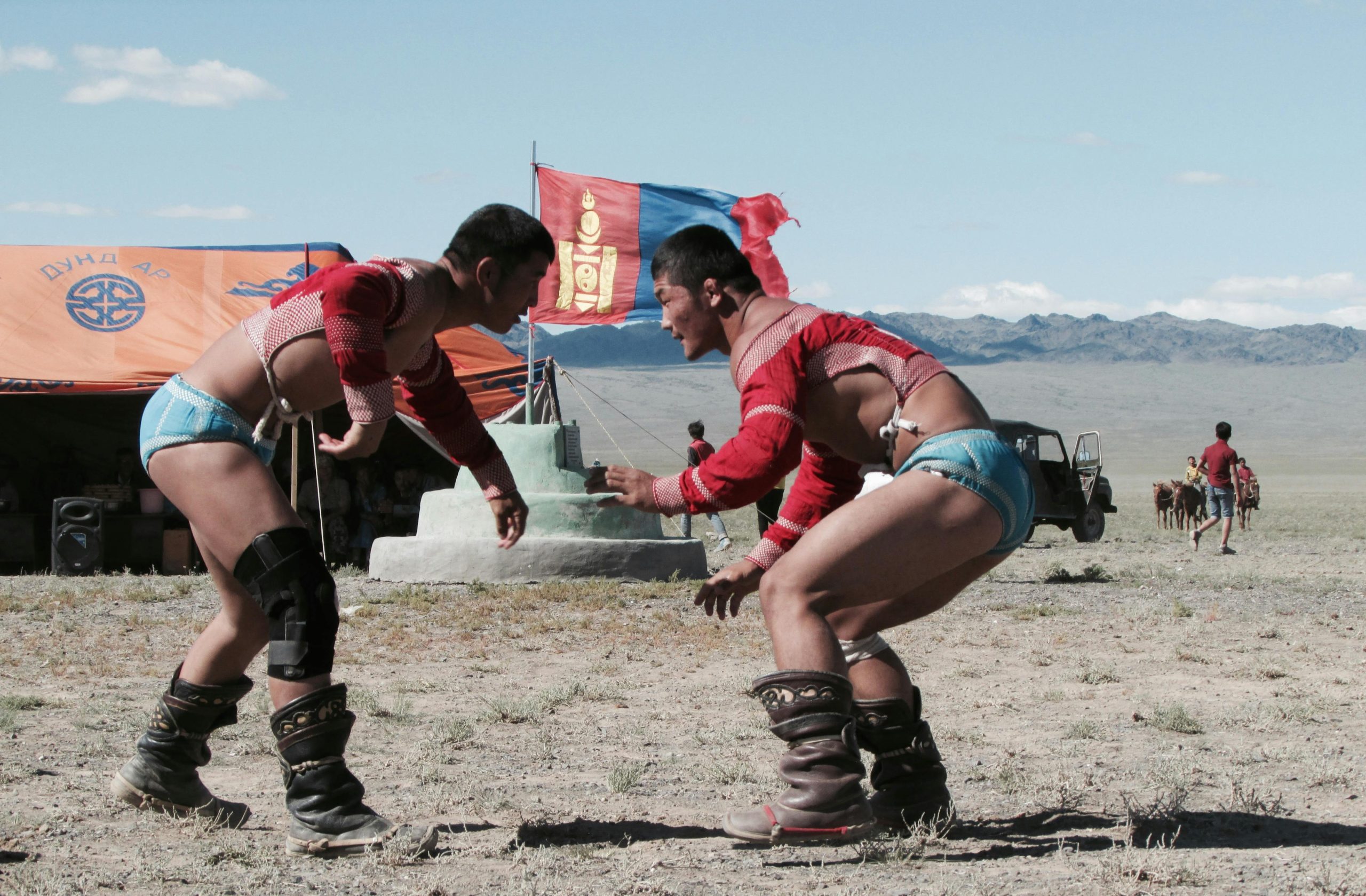Mongolia’s Naadam Festival, a vibrant celebration of traditional sports, culture, and history, is the country’s most significant and beloved event. Known locally as “Eriin Gurvan Naadam,” meaning “the three games of men,” the festival showcases wrestling, horse racing, and archery. These sports are more than mere competitions; they are a testament to Mongolia’s rich heritage and warrior spirit. In this comprehensive article, we’ll explore the history, significance, and experience of the Naadam Festival.
A Glimpse into History
Naadam has ancient roots, dating back to the days of the Mongol Empire when these competitions were used to train warriors and celebrate military victories. The festival’s origins are intertwined with the traditions of the nomadic lifestyle and the need for physical prowess in hunting and combat. Over the centuries, Naadam evolved from military exercises into a nationwide celebration of Mongolian identity and culture.
In 1921, after Mongolia’s independence from Chinese rule, Naadam was officially declared a national holiday. Today, it commemorates the revolution’s victory and the country’s rich cultural heritage. In 2010, Naadam was inscribed on the UNESCO Representative List of the Intangible Cultural Heritage of Humanity, further cementing its importance.
The Three Games of Men
1. Wrestling (Bökh)
Wrestling is the centerpiece of the Naadam Festival, symbolizing strength, endurance, and skill. The matches take place on an open field, with wrestlers wearing traditional costumes, including a snug jacket (zodog) and shorts (shuudag). Unlike Western wrestling, there are no weight classes or time limits in Mongolian wrestling. The objective is simple: make your opponent touch the ground with any part of their body other than their feet.
The wrestling competition begins with a ceremonial dance, called “eagle dance,” performed by each wrestler. This ritual, meant to invoke strength and spirit, is a significant part of the spectacle. The competition follows a knockout format, culminating in the crowning of a champion who earns the title of “Lion,” “Elephant,” or “Falcon,” depending on their performance.
2. Horse Racing (Morin Khuur)
Horse racing in Naadam is a tribute to the Mongolian nomads’ deep connection with their horses. Unlike typical horse races, Naadam races are long-distance events, covering 15 to 30 kilometers depending on the age of the horses. The jockeys are usually children aged between 5 and 13, chosen for their light weight and agility.
The race is a test of speed, endurance, and the bond between rider and horse. The races take place on open steppes, providing a spectacular view of horses thundering across the vast landscape. The winning horse and jockey are celebrated with songs and rituals, and the top five horses are honored with titles and accolades.
3. Archery (Sur Kharvaa)
Archery, another ancient skill essential for survival and warfare, is the third pillar of Naadam. Both men and women participate in archery contests, using traditional Mongolian bows and arrows made from sinew, wood, and horn. The targets are leather rings or cylinders placed at varying distances, with men shooting from 75 meters and women from 65 meters.
Archers wear traditional clothing and take turns shooting a fixed number of arrows. The competition is marked by precision and concentration, with participants chanting traditional songs and cheers to encourage each other. The archers’ accuracy and skill are celebrated, with winners receiving the title of “Marksman.”
The Naadam Experience
Naadam is not just about sports; it’s a cultural extravaganza that includes music, dance, food, and traditional ceremonies. The festival typically spans from July 11 to July 13, with the main events held in the capital city, Ulaanbaatar, as well as in towns and villages across the country.
Opening Ceremony
The festival begins with a grand opening ceremony in Ulaanbaatar’s National Sports Stadium. The event features colorful parades, traditional music and dance performances, and the grand procession of athletes. The opening ceremony is a visual feast, showcasing Mongolia’s rich cultural heritage and the vibrant spirit of its people.
Traditional Attire and Crafts
During Naadam, people wear traditional Mongolian attire, known as “deel,” which are beautifully decorated robes made from silk and cotton. The festival also features stalls and markets selling traditional crafts, handmade souvenirs, and local delicacies. Visitors can explore and purchase unique items like leather goods, felt products, and intricate jewelry, all reflecting Mongolia’s artisanal traditions.
Food and Festivities
Food is an integral part of the Naadam Festival. Traditional Mongolian dishes like buuz (steamed dumplings), khuushuur (fried meat pies), and khorkhog (mutton cooked with hot stones) are widely available. Dairy products, especially those made from horse milk, such as airag (fermented mare’s milk), are also popular.
The festival atmosphere is lively and festive, with people gathering to enjoy music, games, and socializing. Folk music performances, throat singing, and traditional dance are common, adding to the cultural richness of the event.
Regional Naadam Celebrations
While Ulaanbaatar hosts the largest Naadam Festival, regional celebrations in towns and villages across Mongolia offer a more intimate and authentic experience. These smaller events provide a closer look at local customs and community spirit, allowing visitors to engage more deeply with the traditions and hospitality of the Mongolian people.
The Naadam Festival is a vibrant celebration of Mongolia’s heritage, showcasing the strength, skill, and resilience of its people. It offers a unique opportunity to witness ancient traditions and participate in the communal joy that defines Mongolian culture. Whether you are a sports enthusiast, a history buff, or a cultural explorer, Naadam provides an unforgettable experience that captures the heart and soul of Mongolia.
